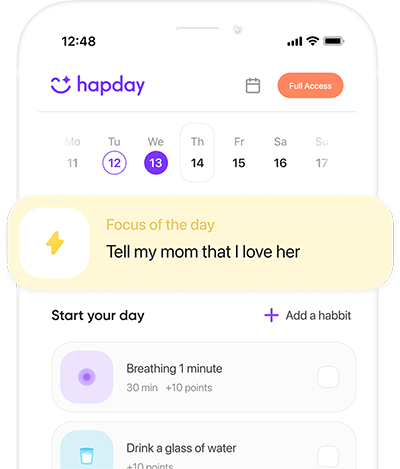Let’s face it: today’s world feels like it’s spinning faster than ever before, doesn’t it? Stress and anxiety have somehow found a cozy place in our daily lives, like uninvited guests that just won’t leave. That’s why so many people—especially folks in the Gen Z and Millennial crowds—are turning to mindfulness meditation. It’s an age-old practice with roots in Buddhist traditions and a new lease on life nowadays, thanks to its bona fide knack for boosting mental health and inner peace.
Table of Contents
- Understanding Mindfulness Meditation
- The Science of Happiness and Mindfulness
- Practical Steps to Begin Your Mindfulness Journey
- The Role of Consistency in Achieving Happiness
- Mindfulness in Everyday Life
- Measuring the Impact of Mindfulness on Happiness
- The Wider Impact: Improved Relationships and Social Interactions
- Conclusion
Understanding Mindfulness Meditation
So, what’s all the fuss about mindfulness meditation, anyway? At its core, it’s about zoning in on the right-now—this very moment—while kind of just nodding politely to whatever thoughts, feelings, or bodily grumbles float your way. Think of it as a workout for your brain, helping you pump the brakes on racing thoughts, kick bad vibes to the curb, and find that sweet spot where your mind and body are whispering, not yelling. Back in 2021, Psychological Science dropped some wisdom on us, saying that mindfulness meditation might even give your working memory and decision-making a little tune-up, leading to more smiles and heaps of well-being.
Getting in the groove with mindfulness lets people enjoy judgment-free awareness. I mean, who wouldn’t want a bigger slice of peace and happiness pie? But really, how does sitting quietly translate to real-world joy?
The Science of Happiness and Mindfulness
You don’t have to take my word for it—science has our back on this one. The University of Massachusetts Medical School did some digging, and their findings were pretty uplifting. People dabbling in mindfulness meditation reported more positive vibes and fewer struggles with depression and anxiety than those who spent their time not meditating.
Mindfulness acts like a personal trainer for your brain, especially the prefrontal cortex, which is all about those happy feels. Plus, it tones down the amygdala—our internal freak-out zone—which is fantastic news for anyone tired of being stressed out. And let’s not forget the meta-analysis from JAMA Internal Medicine that covered 47 studies. It’s practically a love letter to mindfulness, showing that meditation can ease anxiety and depression, paving a smoother road to happiness.
Practical Steps to Begin Your Mindfulness Journey
Okay, ready to dive into this mindfulness thing? You don’t need a Himalayan retreat or a spare room full of incense. Just start with the basics:
- Start Small: Begin with a smidge of time—maybe 3 to 5 minutes daily. It’s all about finding your groove. As time goes on, you’ll find yourself naturally sticking around for longer sessions, especially if you tap into easy-to-use apps like Hapday.
- Create a Comfortable Environment: Pick a spot that’s all yours, free from everyday chaos. It could be the cozy nook by your bedroom window or that shady bench in the park.
- Focus on Your Breathing: Start zeroing in on your breath—feel it flow in and out. And if your mind does wander (because it will), just gently nudge it back to your breath. This tiny exercise works wonders on calming your mental chatter.
- Accept Your Thoughts: No need to fight your thoughts as if they’re rival teams. Acknowledge them—give ’em a little wave and let them float on by like clouds.
The Role of Consistency in Achieving Happiness
Here’s the kicker—consistency is your secret sauce in the meditation recipe. A study in Social Cognitive and Affective Neuroscience hinted at some pretty cool brain changes from regular practice. Think about it like hitting the gym but for your emotions, sturdier and cheerier one day at a time.
Mindfulness in Everyday Life
Now, don’t box mindfulness into a quaint little meditation corner. Blend it into your life. Try mindful eating—who knew a strawberry could taste so good?—or mindful walking, where each step is an adventure. Even your daily grind can sneak in some meditative moments.
Mindfulness apps are your buddy here, offering guidance and morale boosts when you hit a mental roadblock. Hapday, for instance, dishes out a buffet of tailored programs, helping you choose between stress-busting and float-off-into-bliss sessions.
Measuring the Impact of Mindfulness on Happiness
How do you know it’s working, you ask? Keep tabs on your progress! Jot down your post-meditation musings or track emotional shifts. If you’re a techie, gadgets that monitor stress levels can give you solid proof you’re moving in the right direction.
The Wider Impact: Improved Relationships and Social Interactions
It’s like a ripple effect—your happiness makes waves wherever you go. With more peace and less knee-jerk reactions, you chat and connect with others on a whole new level. Get ready for deeper conversations and bonds that stick.
Conclusion
Mindfulness meditation? It’s your ticket to a happier, more zen version of yourself. Backed by solid science and some life-lived proof, this practice is accessible, real, and genuinely life-enhancing. So, as you step onto this path, remember that staying open and sticking with it is key.
Fire up your journey with the Hapday app and dive headfirst into the sheer joy of living in the now. Learn more here.

